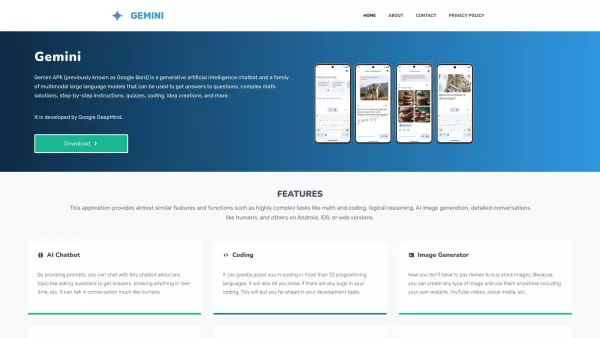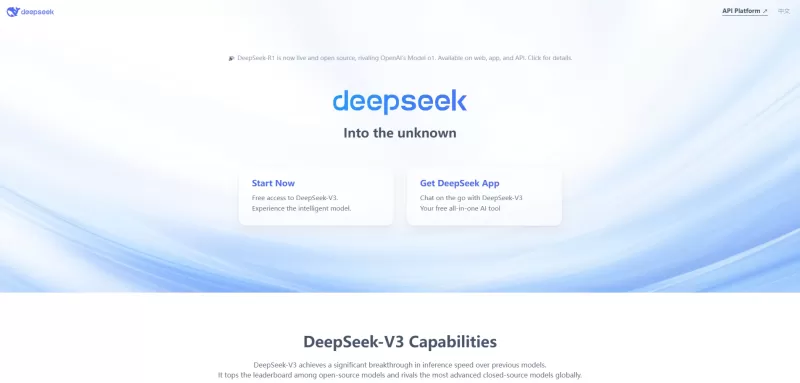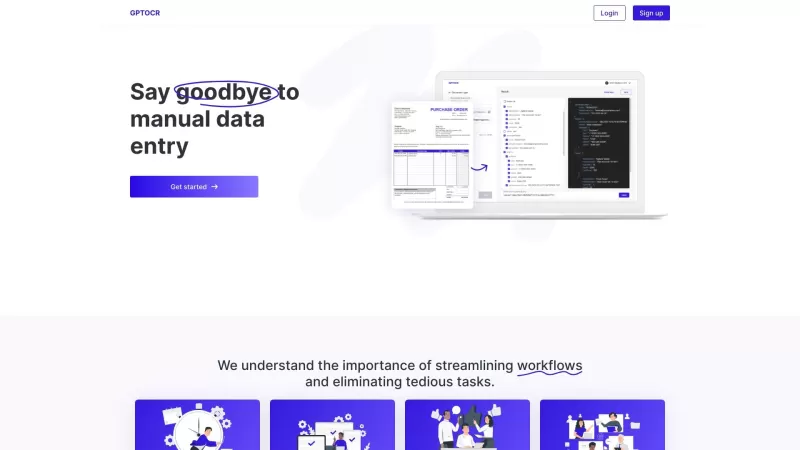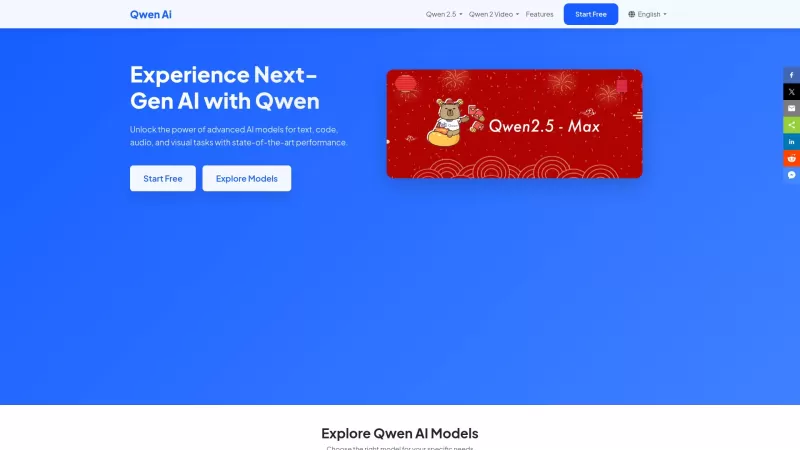AI-Powered Diagnostics: Transforming Healthcare Precision
Artificial intelligence (AI) is reshaping medical diagnostics, delivering precise, swift, and tailored healthcare solutions. By detecting diseases early and minimizing errors, AI is redefining patient care. This article explores AI's principles, applications, and future in diagnostic systems, highlighting current trends and possibilities.
Key Points
AI boosts diagnostic precision and speed.
AI lowers costs through task automation.
Machine learning drives disease prediction.
AI enables early chronic disease detection.
Challenges include data consistency and training quality.
Future trends focus on explainable AI and clinical integration.
The Impact of AI on Medical Diagnostics
What is AI-Driven Diagnosis?
Medical diagnostics are vital for patient outcomes and treatment planning.

Traditional methods often require extensive data and expertise, making them time-intensive. AI streamlines these processes, enhancing accuracy and reducing errors. AI diagnostic systems analyze vast datasets, including patient histories, symptoms, and imaging, empowering doctors to make informed decisions.
Key impacts include:
- Improved Accuracy: AI detects subtle data patterns, ensuring precise diagnoses.
- Greater Efficiency: AI processes data rapidly, freeing doctors for patient care.
- Tailored Treatments: AI customizes plans based on individual patient data.
- Cost Savings: Automation reduces expenses, improving care accessibility.
- Early Detection: AI identifies diseases early, boosting treatment success.
Core Principles of AI Diagnostic Algorithms
AI diagnostics rely on key principles critical to their effectiveness.
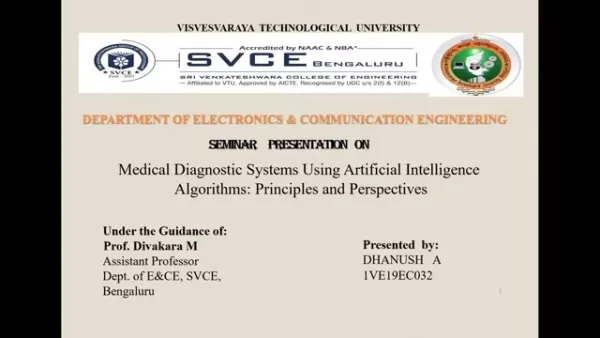
These principles guide developers and healthcare professionals.
Machine Learning: Machine learning (ML) algorithms learn from data, identifying patterns and improving over time. Common techniques include:
- Supervised Learning: Trained on labeled data to map inputs to outcomes.
- Unsupervised Learning: Finds patterns in unlabeled data for new insights.
- Deep Learning: Uses neural networks to analyze complex data like images.
Data Integration: AI processes diverse medical data, such as health records, imaging, and lab results, ensuring accuracy through careful preprocessing.
Pattern Recognition: AI excels at spotting disease-indicative patterns in data.
Predictive Modeling: Uses historical data to predict disease progression or treatment outcomes.
Fuzzy Logic: Handles uncertainty in symptoms and results for nuanced assessments.
AI Techniques in Diagnostic Systems
Prominent AI Algorithms and Uses
Various AI algorithms enhance diagnostic precision and efficiency.
- Fuzzy Logic: Manages imprecise data, addressing symptom uncertainty.
- Artificial Neural Networks (ANNs):
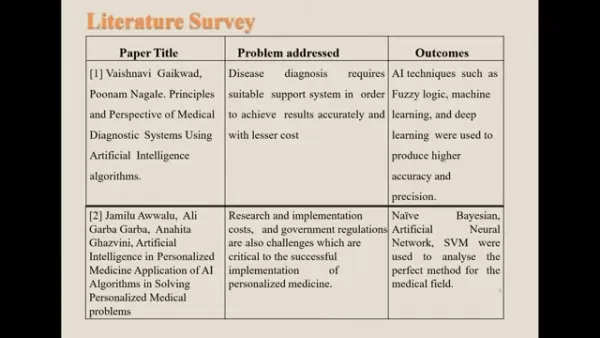
ANNs mimic human brain functions, excelling in image recognition and predictive tasks.
- Support Vector Machines (SVMs): Classify diseases using high-dimensional data, optimizing boundaries.
- K-Nearest Neighbors (KNN): Classifies data based on proximity, effective for simple tasks.
Summary of AI techniques:
AI Technique Application Outcomes Fuzzy Logic Managing symptom uncertainty Nuanced patient condition assessments. Artificial Neural Networks Image recognition, predictive tasks Precise pattern detection in complex data. Support Vector Machines Disease classification Effective high-dimensional data analysis. K-Nearest Neighbors Basic classification Reliable proximity-based classification.
These algorithms power AI diagnostic tools, aiding precise healthcare decisions.
Integrating AI into Diagnostics
Machine Learning Implementation Steps
Effective AI integration requires a structured approach.

Steps to incorporate AI:
- Data Collection: Gather comprehensive data from health records and imaging.
- Data Preparation: Clean and standardize data for consistency.
- Algorithm Selection: Choose algorithms like SVMs or ANNs based on data needs.
- Model Training: Adjust parameters to enhance accuracy.
- Model Evaluation: Test models on new data for reliability.
- Deployment: Integrate models into clinical workflows with user interfaces.
- Continuous Monitoring: Update models with new data to maintain performance.
Collaboration among data scientists, clinicians, and IT experts ensures AI success.
Advantages and Challenges of AI Diagnostics
Advantages
Higher diagnostic accuracy
Faster diagnoses, shorter wait times
Customized patient treatments
Lower costs via automation
Early disease detection
Enhanced access in remote areas
Challenges
High initial setup costs
Data privacy and security risks
Potential algorithmic bias
Limited decision transparency
Risk of over-reliance on AI
Need for ongoing updates
Frequently Asked Questions
What are the main benefits of AI in diagnostics?
AI improves accuracy, efficiency, personalization, cost savings, and early detection, enhancing patient outcomes.
Which AI algorithms are used in diagnostics?
Common algorithms include fuzzy logic, ANNs, SVMs, and KNN, each suited to specific data types.
How can hospitals adopt AI diagnostics?
Adoption involves data collection, preparation, algorithm selection, training, evaluation, deployment, and monitoring.
What challenges arise in AI diagnostics?
Challenges include data standardization, training quality, clinical integration, and interoperability.
What are future AI diagnostic trends?
Trends include explainable AI, better training data, and improved clinical integration.
Related Questions
How does AI enhance diagnostic accuracy?
AI analyzes vast datasets, detecting patterns missed by humans. Deep learning excels in image analysis, reducing errors and improving outcomes through continuous learning.
What ethical issues arise with AI diagnostics?
Ethical concerns include data privacy, algorithmic bias, transparency, human oversight, and liability. Robust security, fairness, and clear accountability are essential for trust and equity.
How can small clinics afford AI diagnostics?
Small clinics can use cloud-based AI, open-source platforms, partnerships, government grants, or phased implementation to reduce costs and improve care efficiency.
Related article
 Google Introduces Real-Time AI Camera Sharing in Search
Google Expands AI-Powered "Live" Search Capabilities Across PlatformsAt today's I/O developer conference, Google unveiled expanded access to its innovative "Live" mode feature, enabling users to explore their surroundings through AI-powered visual se
Google Introduces Real-Time AI Camera Sharing in Search
Google Expands AI-Powered "Live" Search Capabilities Across PlatformsAt today's I/O developer conference, Google unveiled expanded access to its innovative "Live" mode feature, enabling users to explore their surroundings through AI-powered visual se
 Dell Launches Nvidia Blackwell-Powered AI Acceleration Platform
Dell Unveils Next-Gen AI Servers with Blackwell GPUs at Vegas EventAt Dell Technologies World in Las Vegas, the company unveiled its latest AI server lineup featuring Nvidia's cutting-edge Blackwell Ultra GPUs, marking a significant leap in enterpris
Dell Launches Nvidia Blackwell-Powered AI Acceleration Platform
Dell Unveils Next-Gen AI Servers with Blackwell GPUs at Vegas EventAt Dell Technologies World in Las Vegas, the company unveiled its latest AI server lineup featuring Nvidia's cutting-edge Blackwell Ultra GPUs, marking a significant leap in enterpris
 Cognition Acquires Windsurf, Maker of AI Coding Agent Devin
Cognition Acquires AI Coding Startup Windsurf Amid Industry Frenzy
Cognition, the AI startup responsible for the revolutionary coding assistant Devin, revealed plans to acquire Windsurf through a blog announcement on Monday. This strategic move come
Comments (0)
0/200
Cognition Acquires Windsurf, Maker of AI Coding Agent Devin
Cognition Acquires AI Coding Startup Windsurf Amid Industry Frenzy
Cognition, the AI startup responsible for the revolutionary coding assistant Devin, revealed plans to acquire Windsurf through a blog announcement on Monday. This strategic move come
Comments (0)
0/200
Artificial intelligence (AI) is reshaping medical diagnostics, delivering precise, swift, and tailored healthcare solutions. By detecting diseases early and minimizing errors, AI is redefining patient care. This article explores AI's principles, applications, and future in diagnostic systems, highlighting current trends and possibilities.
Key Points
AI boosts diagnostic precision and speed.
AI lowers costs through task automation.
Machine learning drives disease prediction.
AI enables early chronic disease detection.
Challenges include data consistency and training quality.
Future trends focus on explainable AI and clinical integration.
The Impact of AI on Medical Diagnostics
What is AI-Driven Diagnosis?
Medical diagnostics are vital for patient outcomes and treatment planning.

Traditional methods often require extensive data and expertise, making them time-intensive. AI streamlines these processes, enhancing accuracy and reducing errors. AI diagnostic systems analyze vast datasets, including patient histories, symptoms, and imaging, empowering doctors to make informed decisions.
Key impacts include:
- Improved Accuracy: AI detects subtle data patterns, ensuring precise diagnoses.
- Greater Efficiency: AI processes data rapidly, freeing doctors for patient care.
- Tailored Treatments: AI customizes plans based on individual patient data.
- Cost Savings: Automation reduces expenses, improving care accessibility.
- Early Detection: AI identifies diseases early, boosting treatment success.
Core Principles of AI Diagnostic Algorithms
AI diagnostics rely on key principles critical to their effectiveness.

These principles guide developers and healthcare professionals.
Machine Learning: Machine learning (ML) algorithms learn from data, identifying patterns and improving over time. Common techniques include:
- Supervised Learning: Trained on labeled data to map inputs to outcomes.
- Unsupervised Learning: Finds patterns in unlabeled data for new insights.
- Deep Learning: Uses neural networks to analyze complex data like images.
Data Integration: AI processes diverse medical data, such as health records, imaging, and lab results, ensuring accuracy through careful preprocessing.
Pattern Recognition: AI excels at spotting disease-indicative patterns in data.
Predictive Modeling: Uses historical data to predict disease progression or treatment outcomes.
Fuzzy Logic: Handles uncertainty in symptoms and results for nuanced assessments.
AI Techniques in Diagnostic Systems
Prominent AI Algorithms and Uses
Various AI algorithms enhance diagnostic precision and efficiency.
- Fuzzy Logic: Manages imprecise data, addressing symptom uncertainty.
- Artificial Neural Networks (ANNs):

ANNs mimic human brain functions, excelling in image recognition and predictive tasks.
- Support Vector Machines (SVMs): Classify diseases using high-dimensional data, optimizing boundaries.
- K-Nearest Neighbors (KNN): Classifies data based on proximity, effective for simple tasks.
Summary of AI techniques:
| AI Technique | Application | Outcomes |
|---|---|---|
| Fuzzy Logic | Managing symptom uncertainty | Nuanced patient condition assessments. |
| Artificial Neural Networks | Image recognition, predictive tasks | Precise pattern detection in complex data. |
| Support Vector Machines | Disease classification | Effective high-dimensional data analysis. |
| K-Nearest Neighbors | Basic classification | Reliable proximity-based classification. |
These algorithms power AI diagnostic tools, aiding precise healthcare decisions.
Integrating AI into Diagnostics
Machine Learning Implementation Steps
Effective AI integration requires a structured approach.

Steps to incorporate AI:
- Data Collection: Gather comprehensive data from health records and imaging.
- Data Preparation: Clean and standardize data for consistency.
- Algorithm Selection: Choose algorithms like SVMs or ANNs based on data needs.
- Model Training: Adjust parameters to enhance accuracy.
- Model Evaluation: Test models on new data for reliability.
- Deployment: Integrate models into clinical workflows with user interfaces.
- Continuous Monitoring: Update models with new data to maintain performance.
Collaboration among data scientists, clinicians, and IT experts ensures AI success.
Advantages and Challenges of AI Diagnostics
Advantages
Higher diagnostic accuracy
Faster diagnoses, shorter wait times
Customized patient treatments
Lower costs via automation
Early disease detection
Enhanced access in remote areas
Challenges
High initial setup costs
Data privacy and security risks
Potential algorithmic bias
Limited decision transparency
Risk of over-reliance on AI
Need for ongoing updates
Frequently Asked Questions
What are the main benefits of AI in diagnostics?
AI improves accuracy, efficiency, personalization, cost savings, and early detection, enhancing patient outcomes.
Which AI algorithms are used in diagnostics?
Common algorithms include fuzzy logic, ANNs, SVMs, and KNN, each suited to specific data types.
How can hospitals adopt AI diagnostics?
Adoption involves data collection, preparation, algorithm selection, training, evaluation, deployment, and monitoring.
What challenges arise in AI diagnostics?
Challenges include data standardization, training quality, clinical integration, and interoperability.
What are future AI diagnostic trends?
Trends include explainable AI, better training data, and improved clinical integration.
Related Questions
How does AI enhance diagnostic accuracy?
AI analyzes vast datasets, detecting patterns missed by humans. Deep learning excels in image analysis, reducing errors and improving outcomes through continuous learning.
What ethical issues arise with AI diagnostics?
Ethical concerns include data privacy, algorithmic bias, transparency, human oversight, and liability. Robust security, fairness, and clear accountability are essential for trust and equity.
How can small clinics afford AI diagnostics?
Small clinics can use cloud-based AI, open-source platforms, partnerships, government grants, or phased implementation to reduce costs and improve care efficiency.
 Google Introduces Real-Time AI Camera Sharing in Search
Google Expands AI-Powered "Live" Search Capabilities Across PlatformsAt today's I/O developer conference, Google unveiled expanded access to its innovative "Live" mode feature, enabling users to explore their surroundings through AI-powered visual se
Google Introduces Real-Time AI Camera Sharing in Search
Google Expands AI-Powered "Live" Search Capabilities Across PlatformsAt today's I/O developer conference, Google unveiled expanded access to its innovative "Live" mode feature, enabling users to explore their surroundings through AI-powered visual se
 Cognition Acquires Windsurf, Maker of AI Coding Agent Devin
Cognition Acquires AI Coding Startup Windsurf Amid Industry Frenzy
Cognition, the AI startup responsible for the revolutionary coding assistant Devin, revealed plans to acquire Windsurf through a blog announcement on Monday. This strategic move come
Cognition Acquires Windsurf, Maker of AI Coding Agent Devin
Cognition Acquires AI Coding Startup Windsurf Amid Industry Frenzy
Cognition, the AI startup responsible for the revolutionary coding assistant Devin, revealed plans to acquire Windsurf through a blog announcement on Monday. This strategic move come


